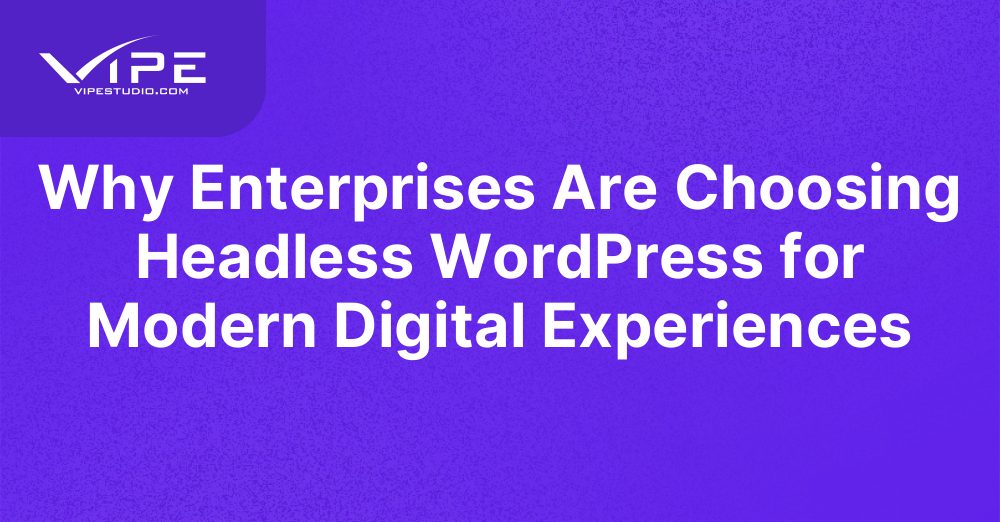07.05.2025
WordPress Development
Why Enterprises Are Choosing Headless WordPress for Modern Digital Experiences
READING TIME: MIN
Table of Content
In today’s fast-paced digital ecosystem, enterprises require more than just a content management system—they need an agile, future-proof solution that seamlessly connects content with multiple frontends. That’s where Headless WordPress enters the scene, transforming the way large-scale organizations build and manage their digital presence.
What Is Headless WordPress and How Does It Work?
Traditional WordPress combines both the frontend (what users see) and backend (where content is created). In contrast, Headless WordPress separates these layers. The backend remains WordPress, but the frontend can be powered by any technology—often JavaScript frameworks like React, Vue, or Next.js.
This decoupling enables enterprises to deliver content across web, mobile, IoT, and even digital signage—all from one centralized WordPress admin panel.
Faster Performance and Greater Control Over Frontend Development
By going headless, enterprises can build highly optimized, lightning-fast frontends using modern tools. This means faster page loads, better SEO, and improved Core Web Vitals scores. Developers also gain full control over the presentation layer, enabling tailored UX and interactive interfaces that go far beyond the limitations of traditional WordPress themes.
Scaling Content Across Channels and Markets
For enterprises operating across regions or platforms, Headless WordPress enables true content reuse. A single piece of content can be published to a website, mobile app, digital kiosk, or partner portal without duplication. This makes managing global content strategies more efficient and cohesive.
At Vipe Studio, we help clients architect headless WordPress setups that integrate with multilingual plugins, localization workflows, and translation APIs for seamless international rollout.
Enhanced Security Through Decoupling
One of the lesser-known advantages of Headless WordPress is security. Since the public-facing site isn’t directly tied to the WordPress backend, it’s significantly harder for attackers to exploit common vulnerabilities. Enterprises often pair this with static site generation (SSG) or server-side rendering (SSR) for additional protection and stability.
API-First Architecture Enables Easier Integration
With the REST API and GraphQL, WordPress becomes a true content hub that integrates effortlessly with other enterprise systems. Whether it’s syncing product data from an ERP, pushing updates to a mobile app, or managing user roles from a CRM, Headless WordPress provides the flexibility needed for a robust digital infrastructure.
If you’re planning to future-proof your content architecture, consult with Vipe Studio to explore a customized Headless WordPress solution.
Is Headless WordPress Right for Every Enterprise?
While Headless WordPress brings agility and scalability, it does come with added complexity and development overhead. It’s best suited for enterprises with in-house dev teams or agency partners familiar with modern frontend frameworks. For marketing-driven websites with limited interactivity, traditional WordPress may still be sufficient.
Ultimately, the decision comes down to your digital strategy. Headless architecture is ideal when you need maximum performance, flexibility, and multichannel content delivery capabilities.
More on The Topic
- Scaling WordPress Without Losing Culture
- WordPress 6.9 “Gene”: What This Release Really Changes
- Managing Gutenberg Chaos at Scale
- The Real Difference Between Managed and Developer-Oriented Hosting
- WordCamp Sofia 2025: A Full Recap of Bulgaria’s Biggest WordPress Event
The content of this website is copyrighted and protected by Creative Commons 4.0.



